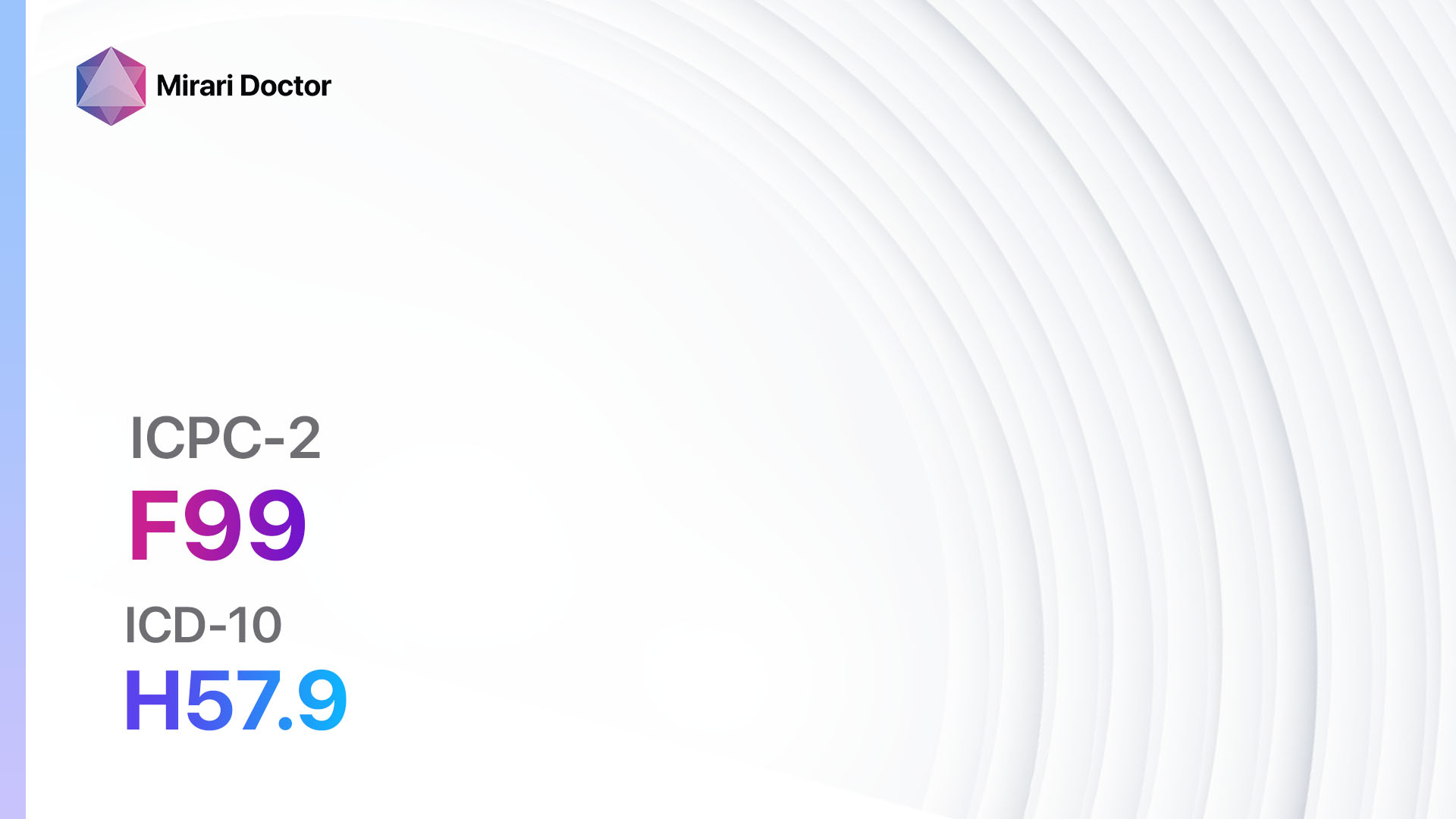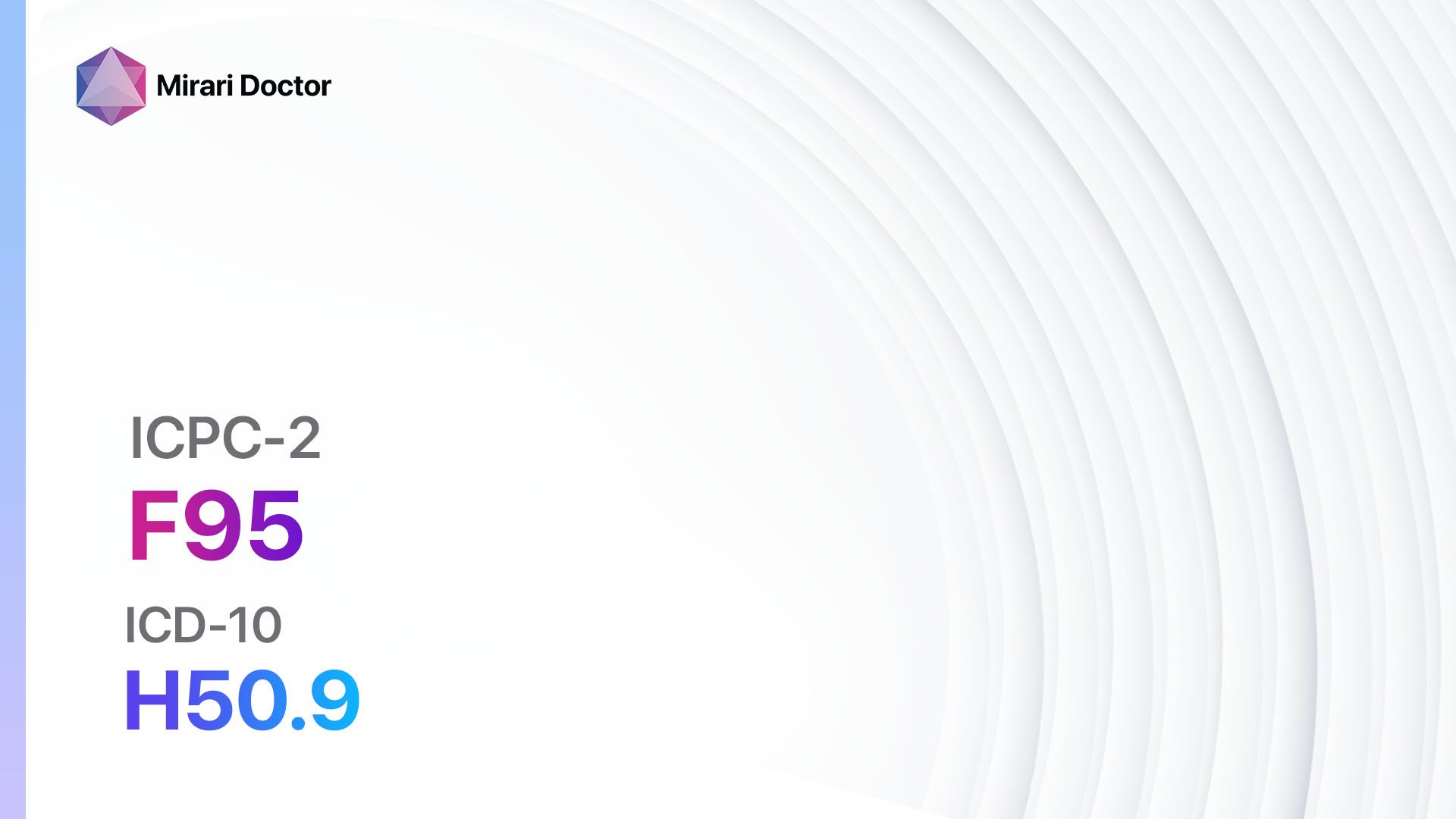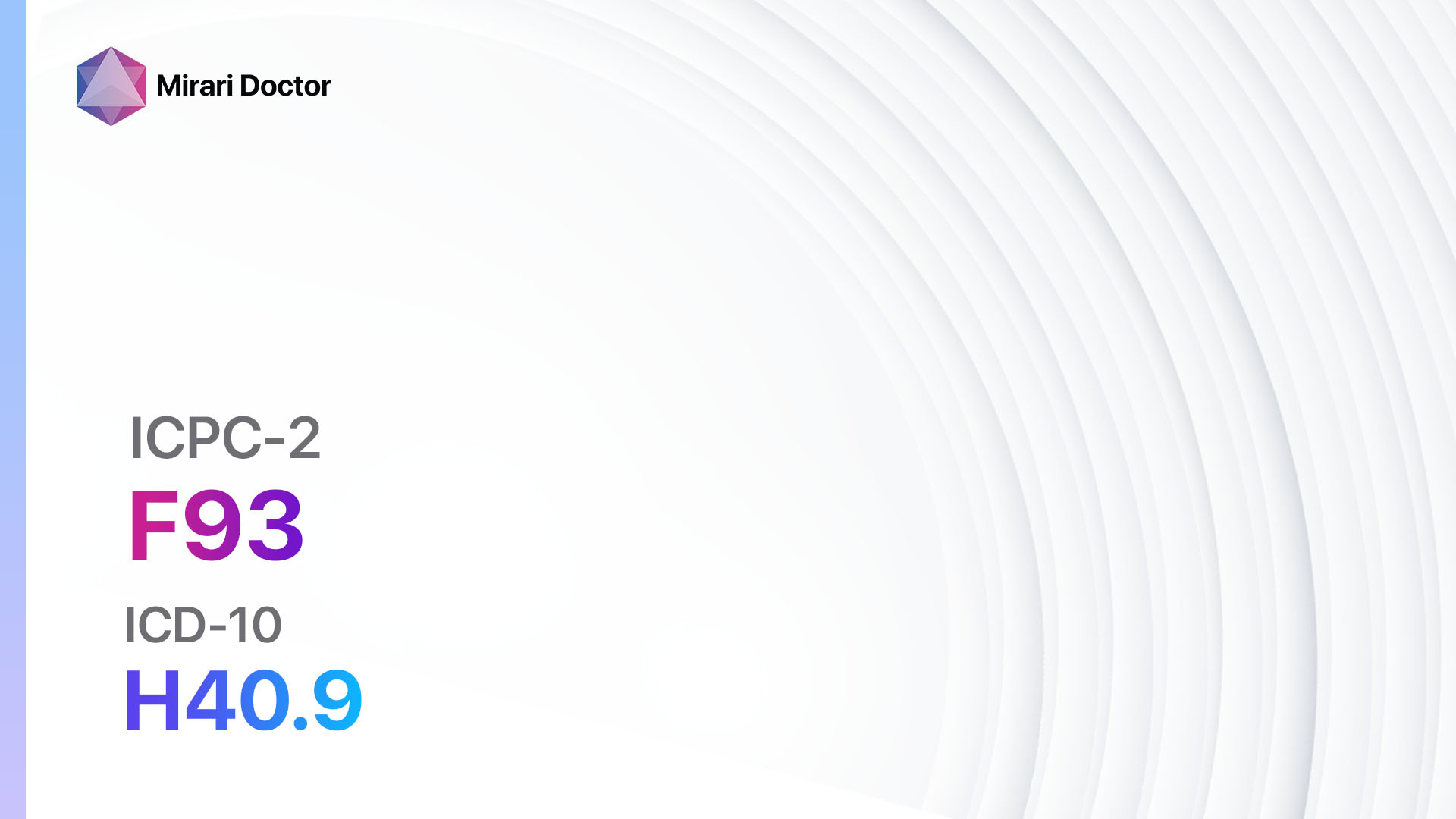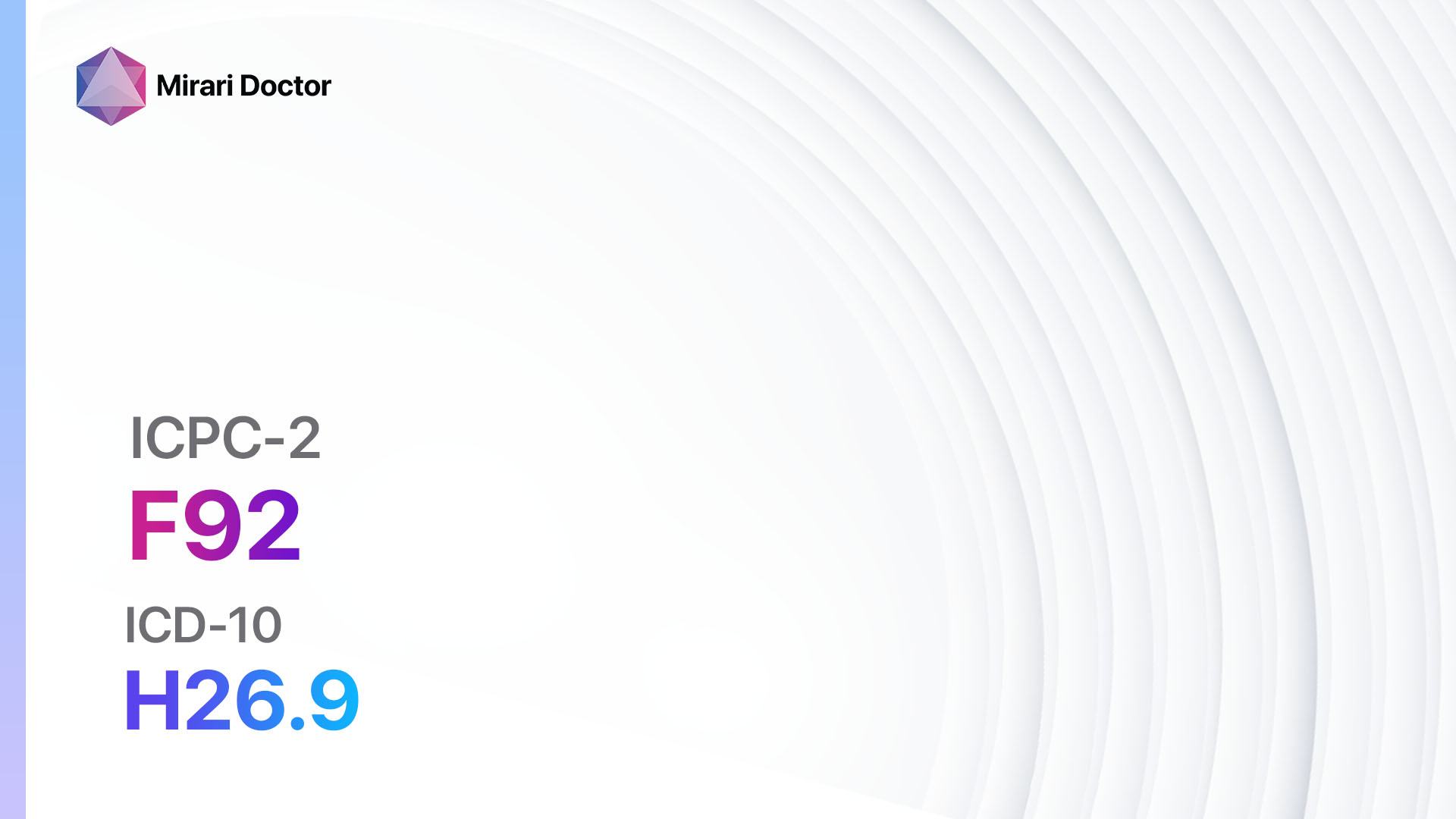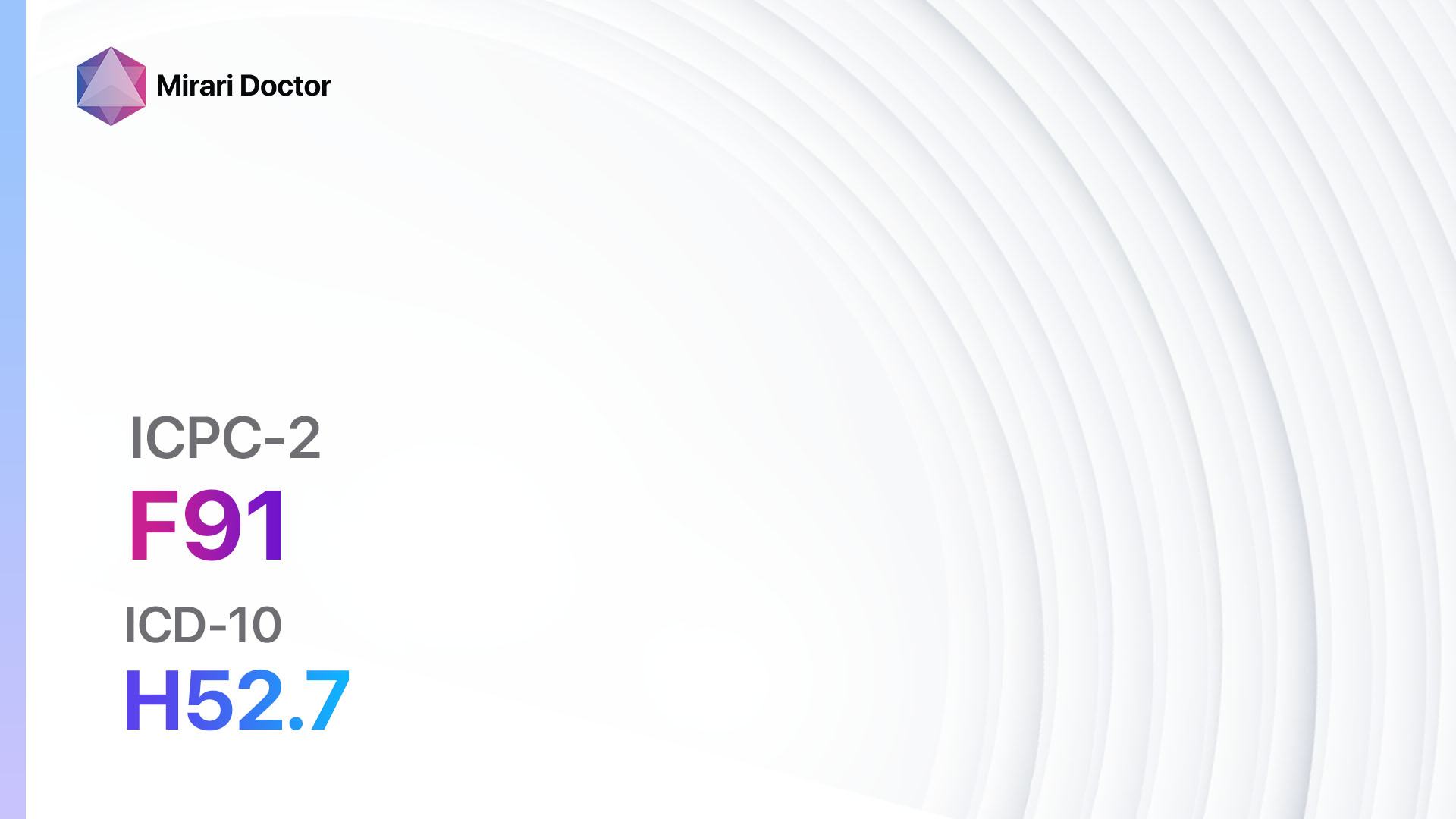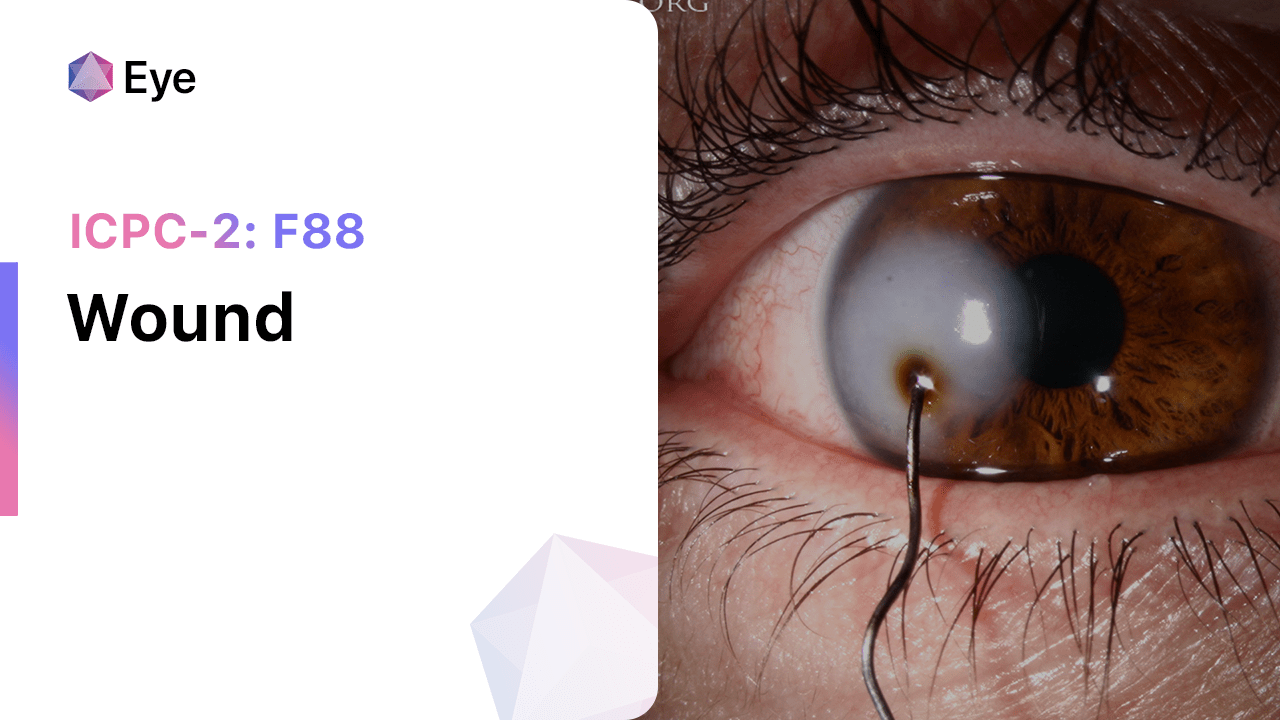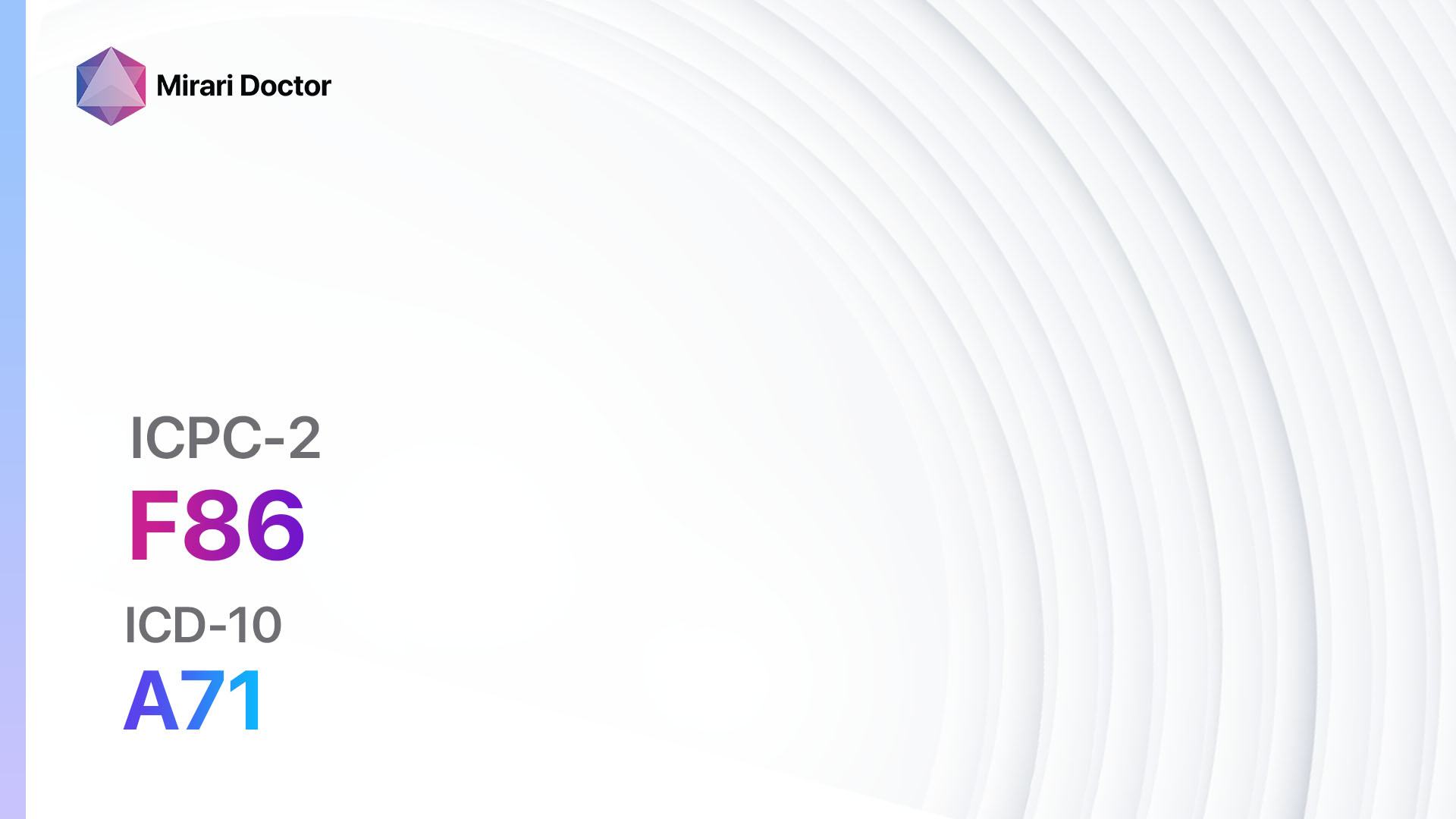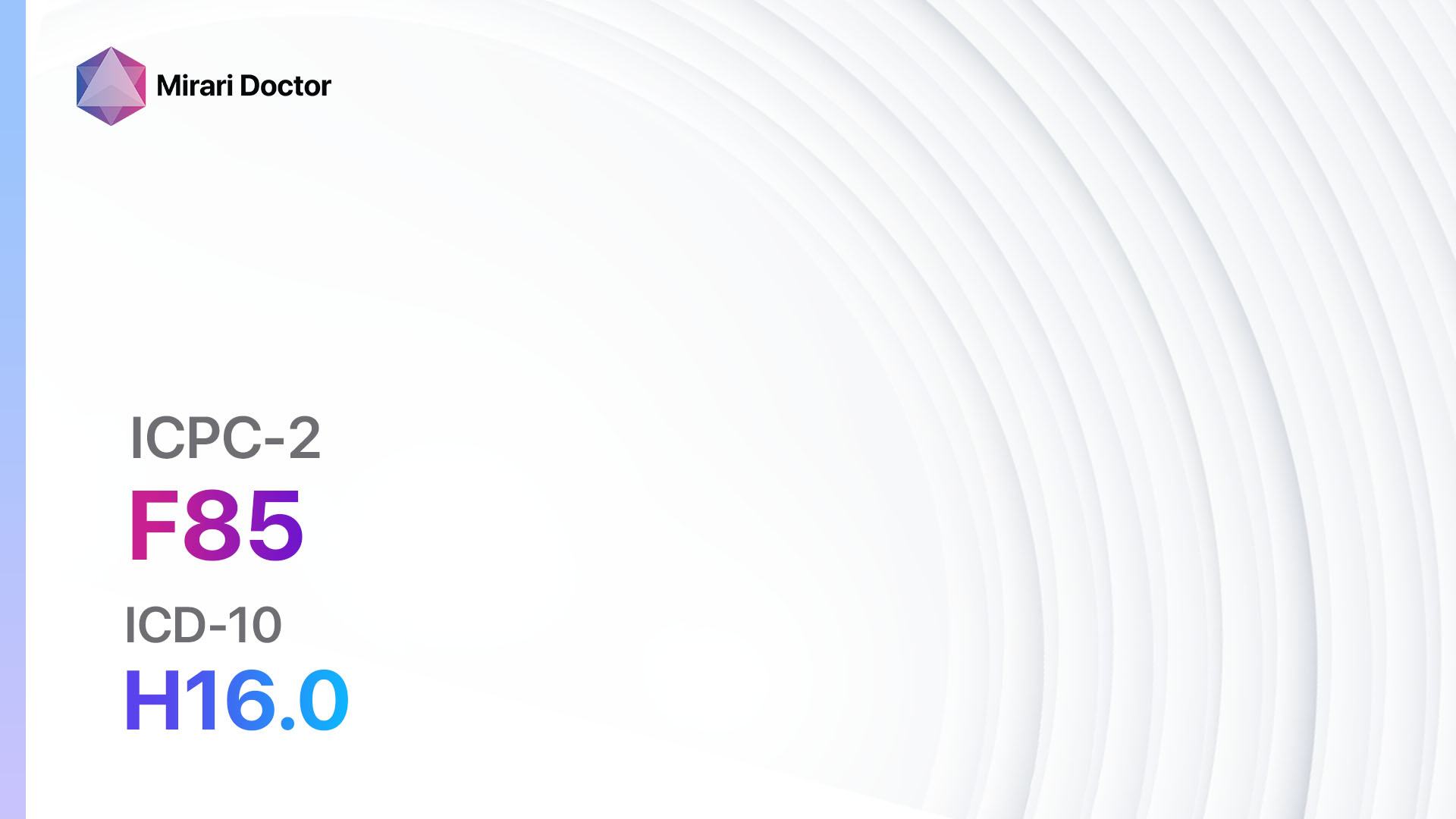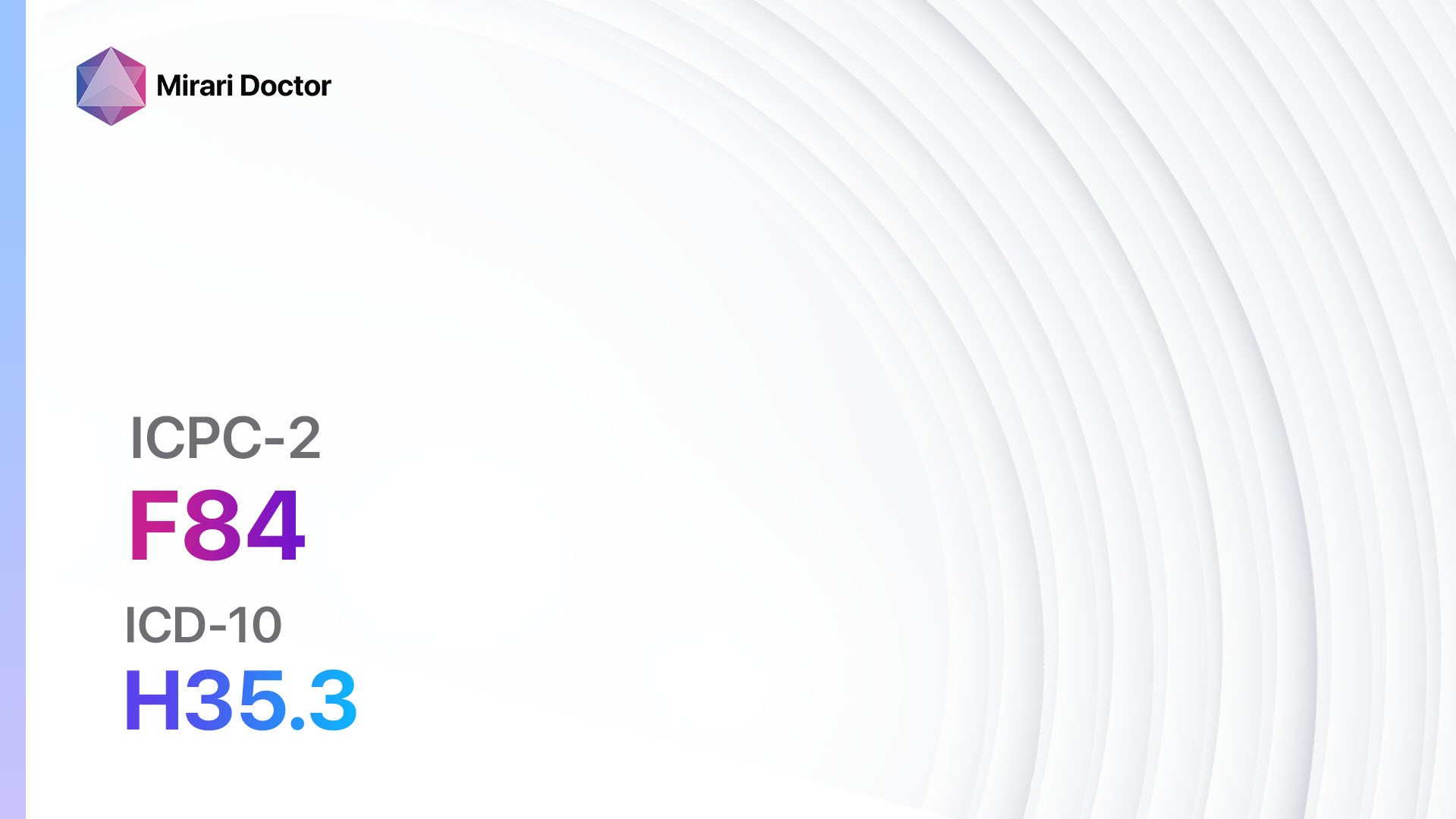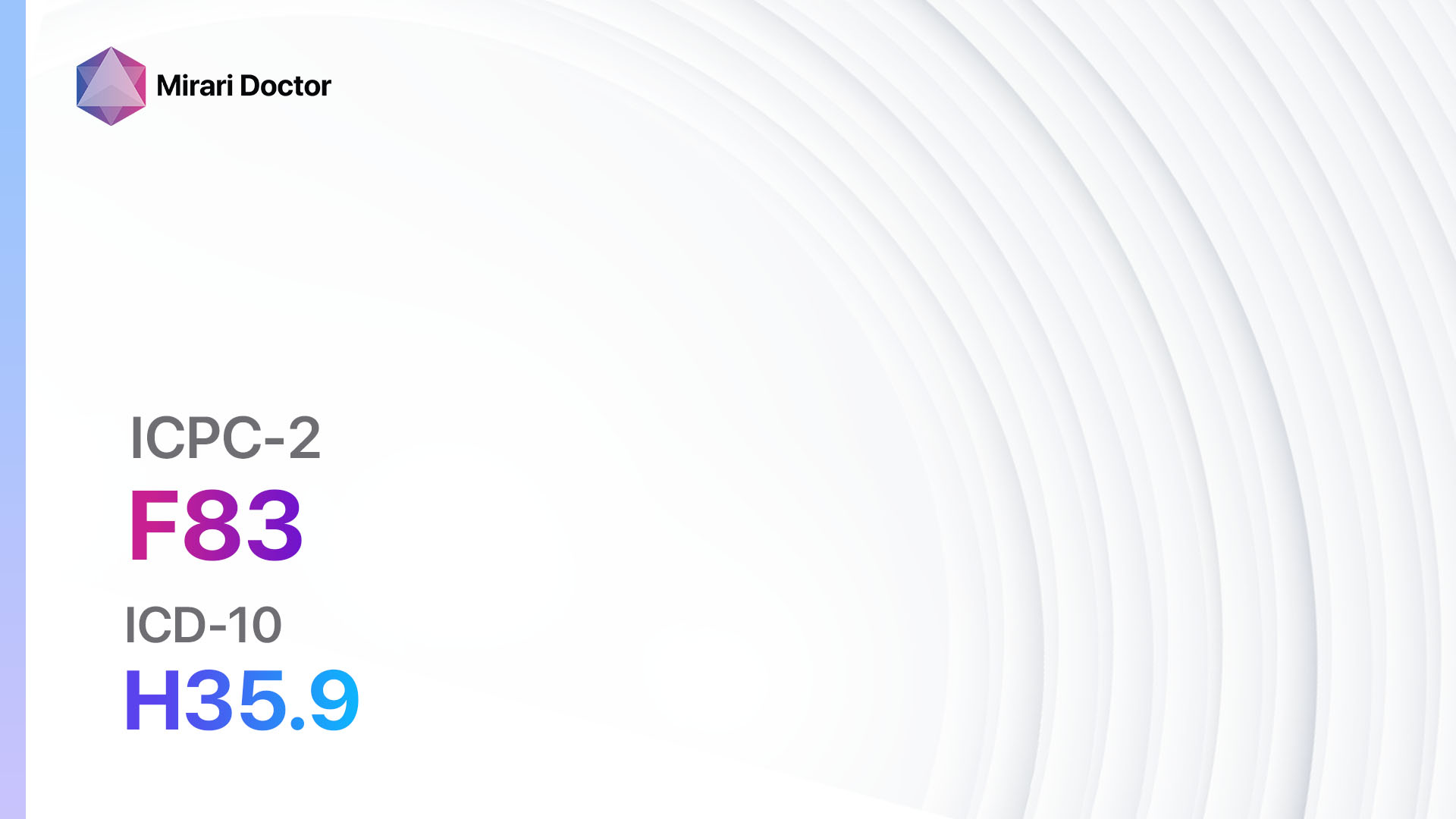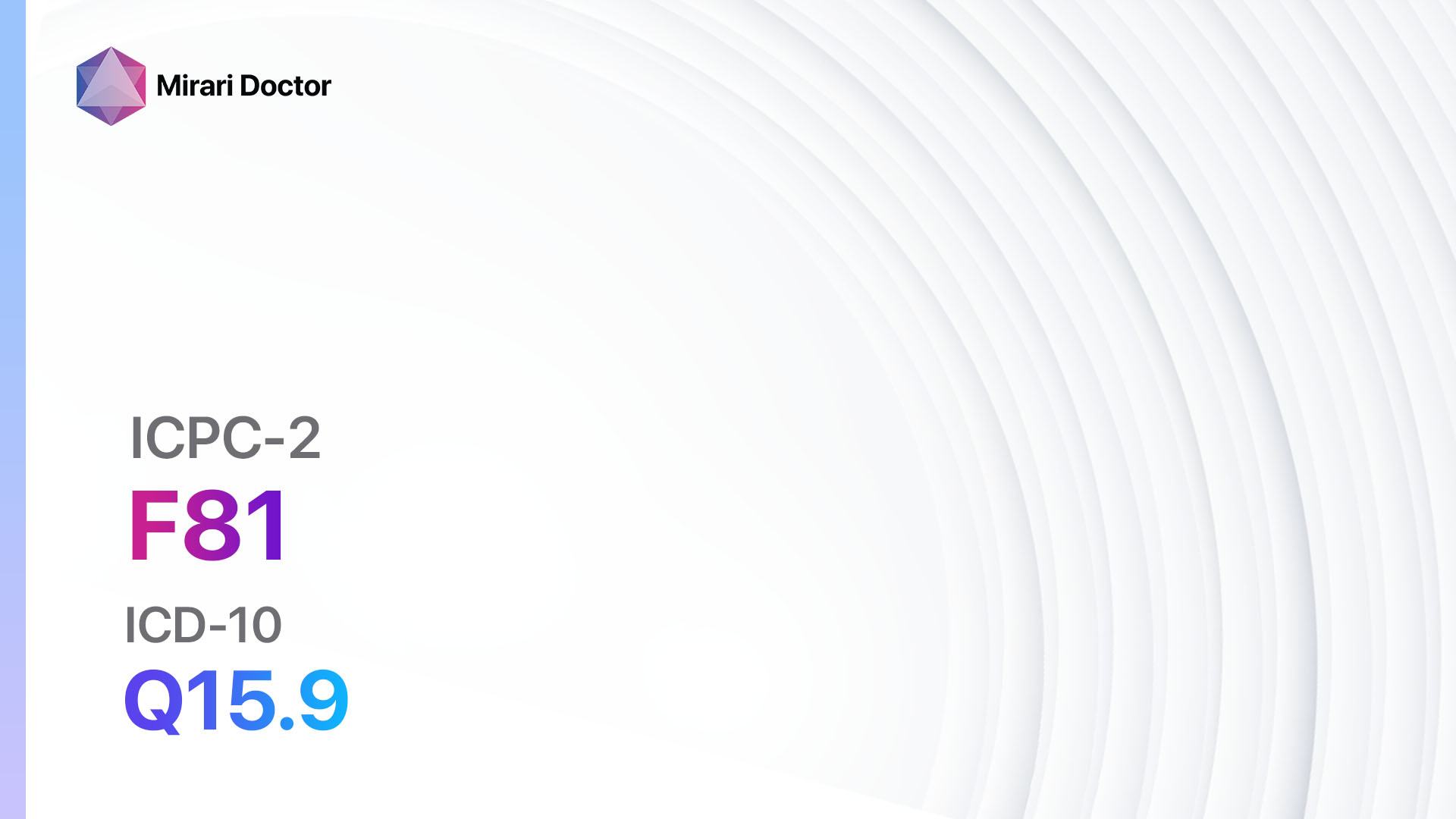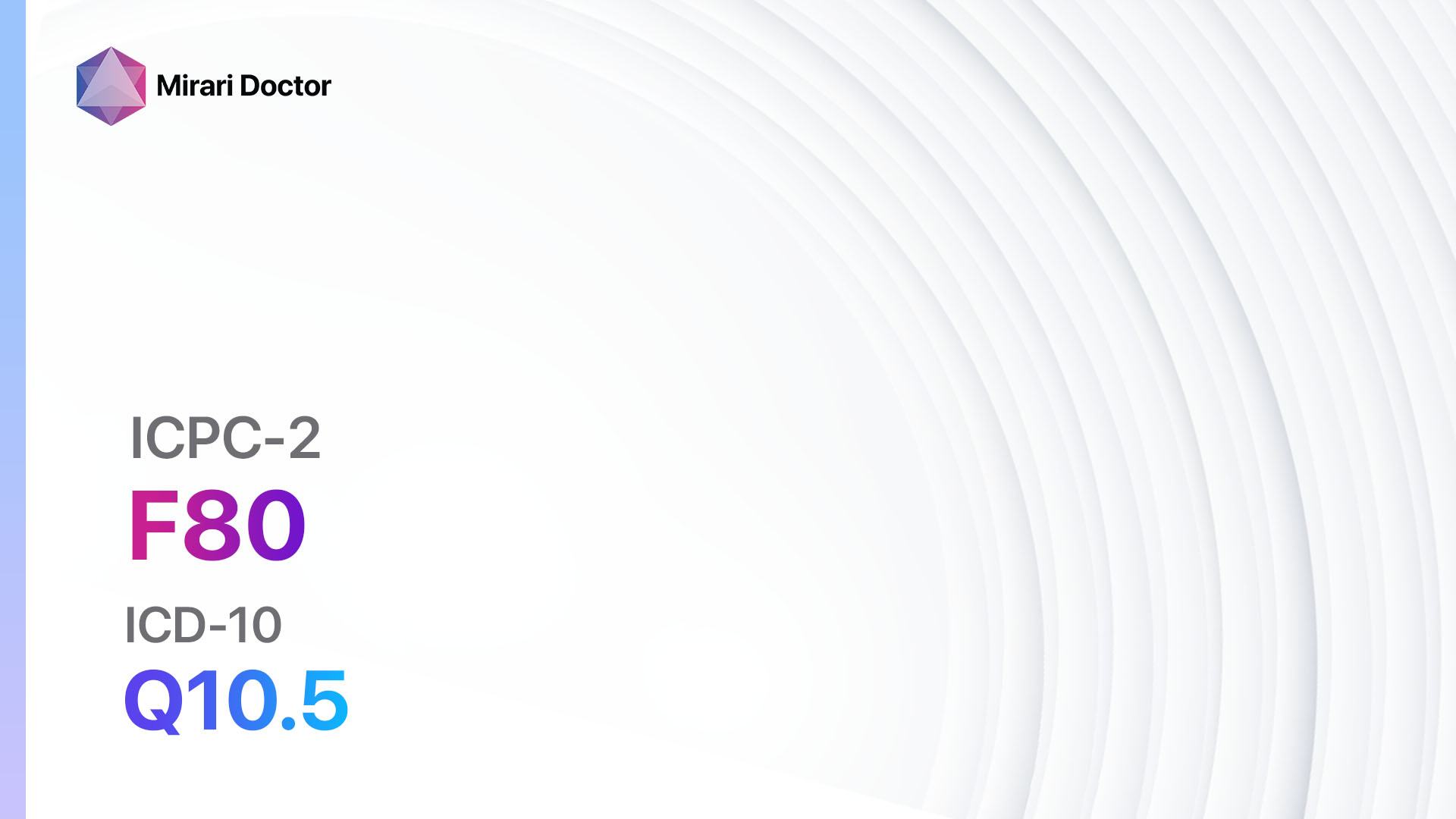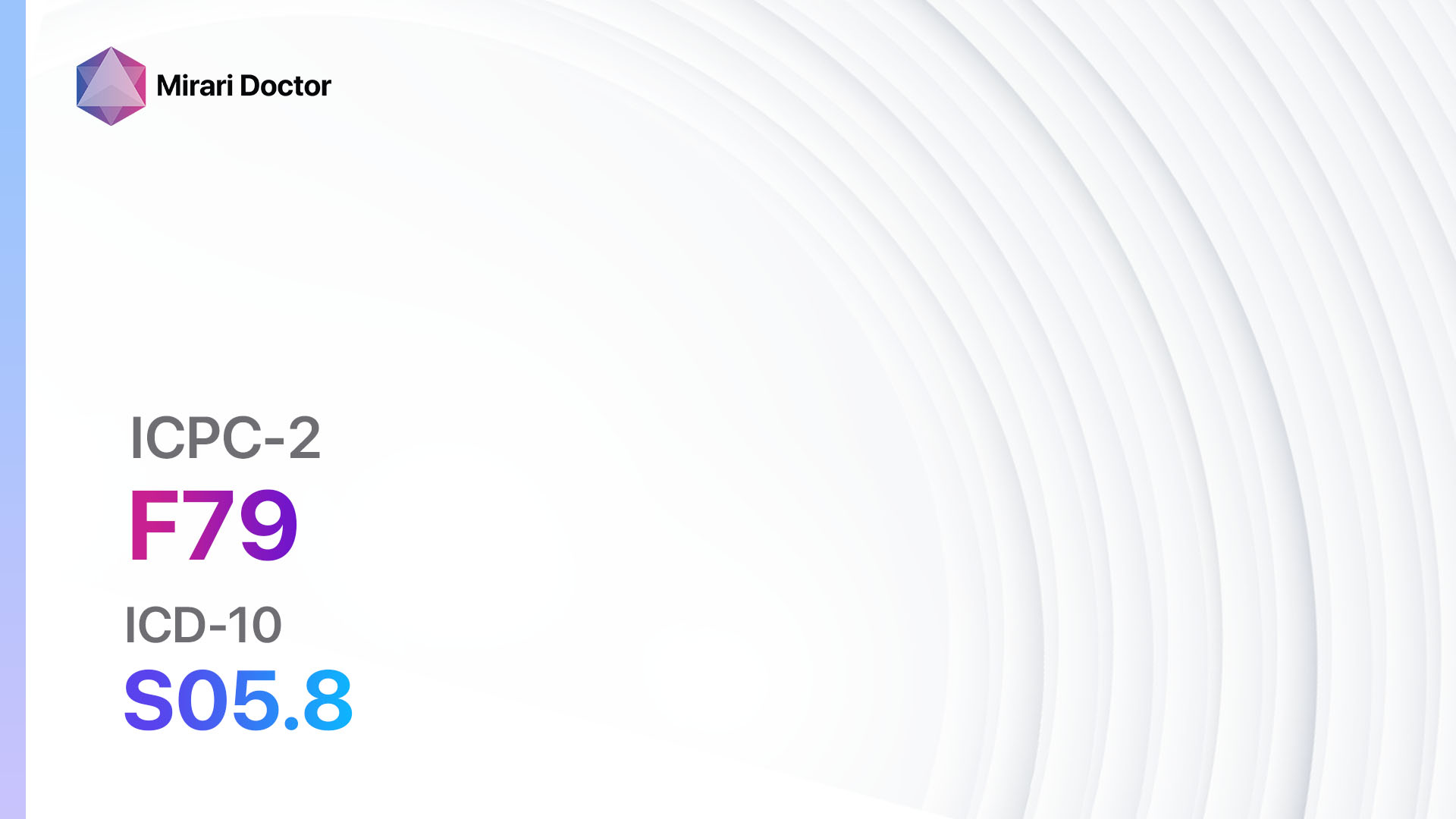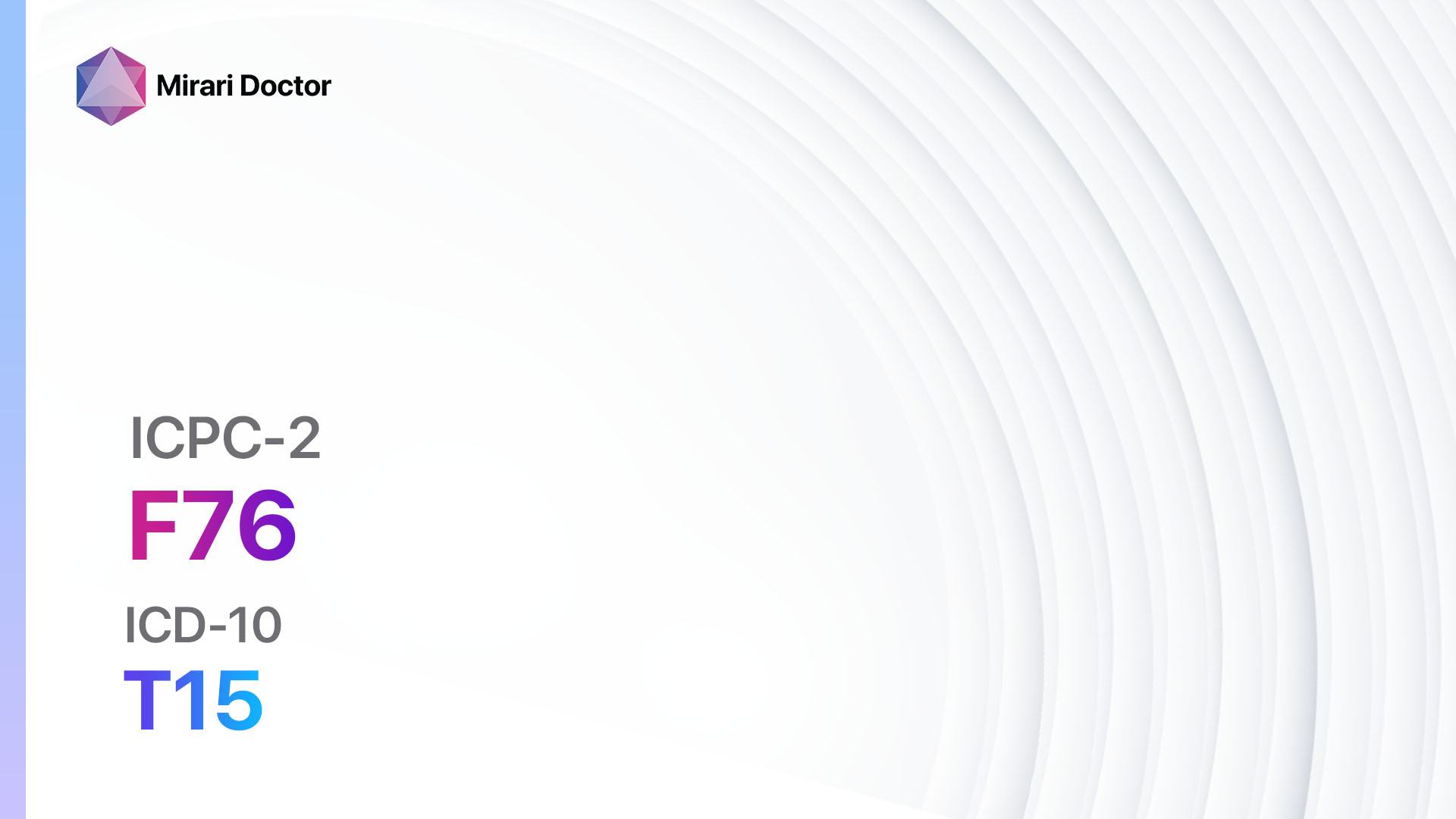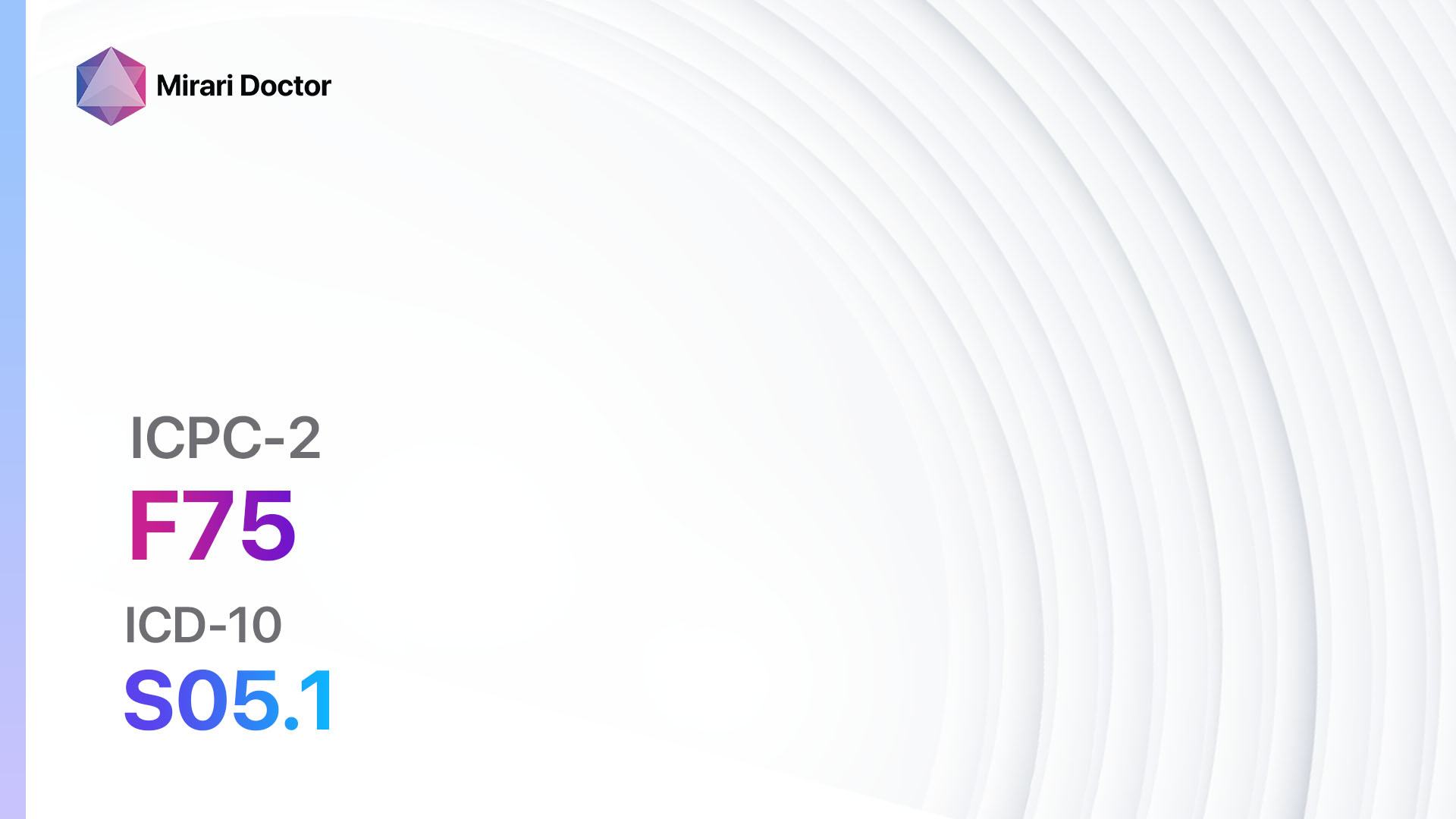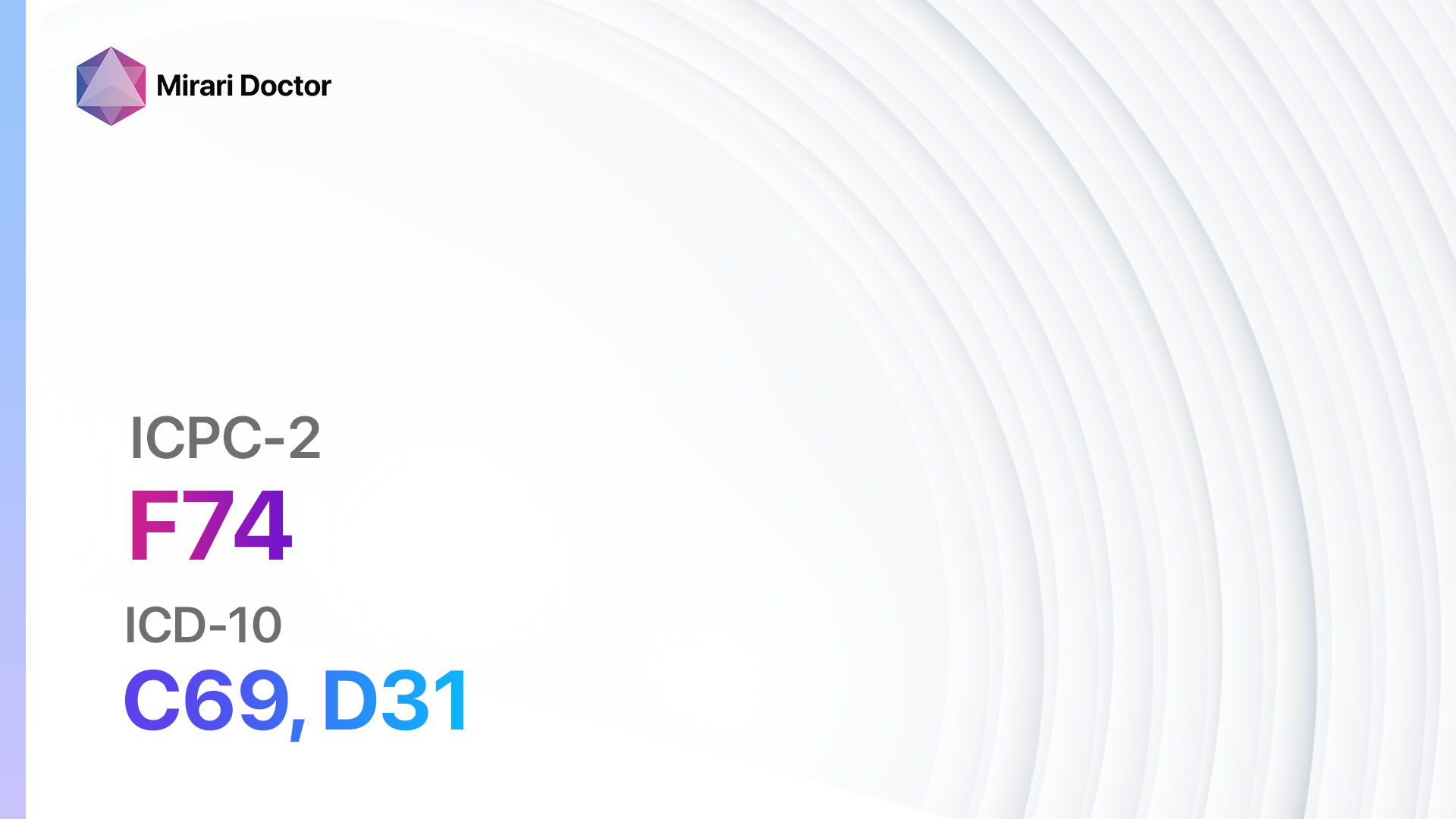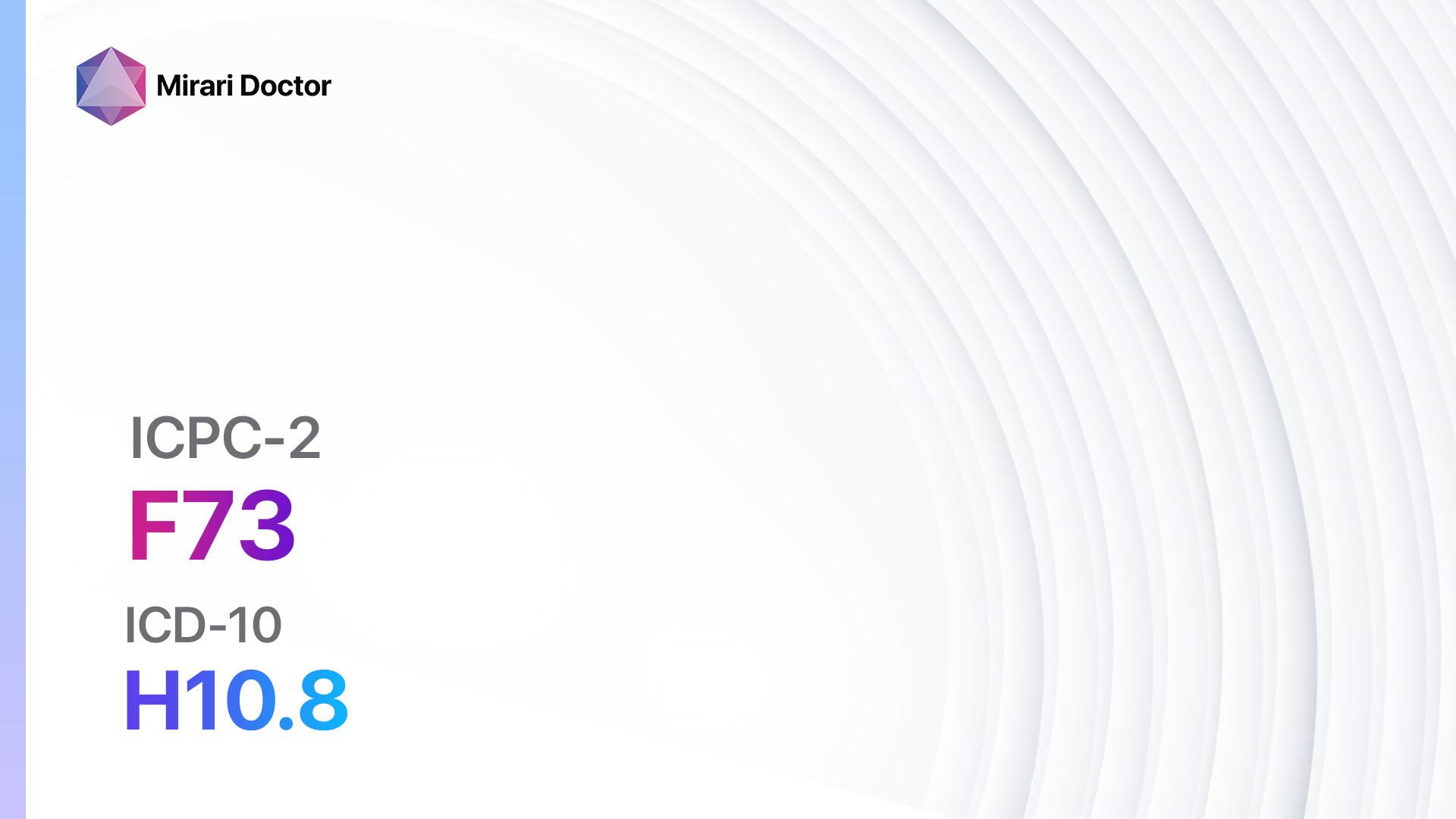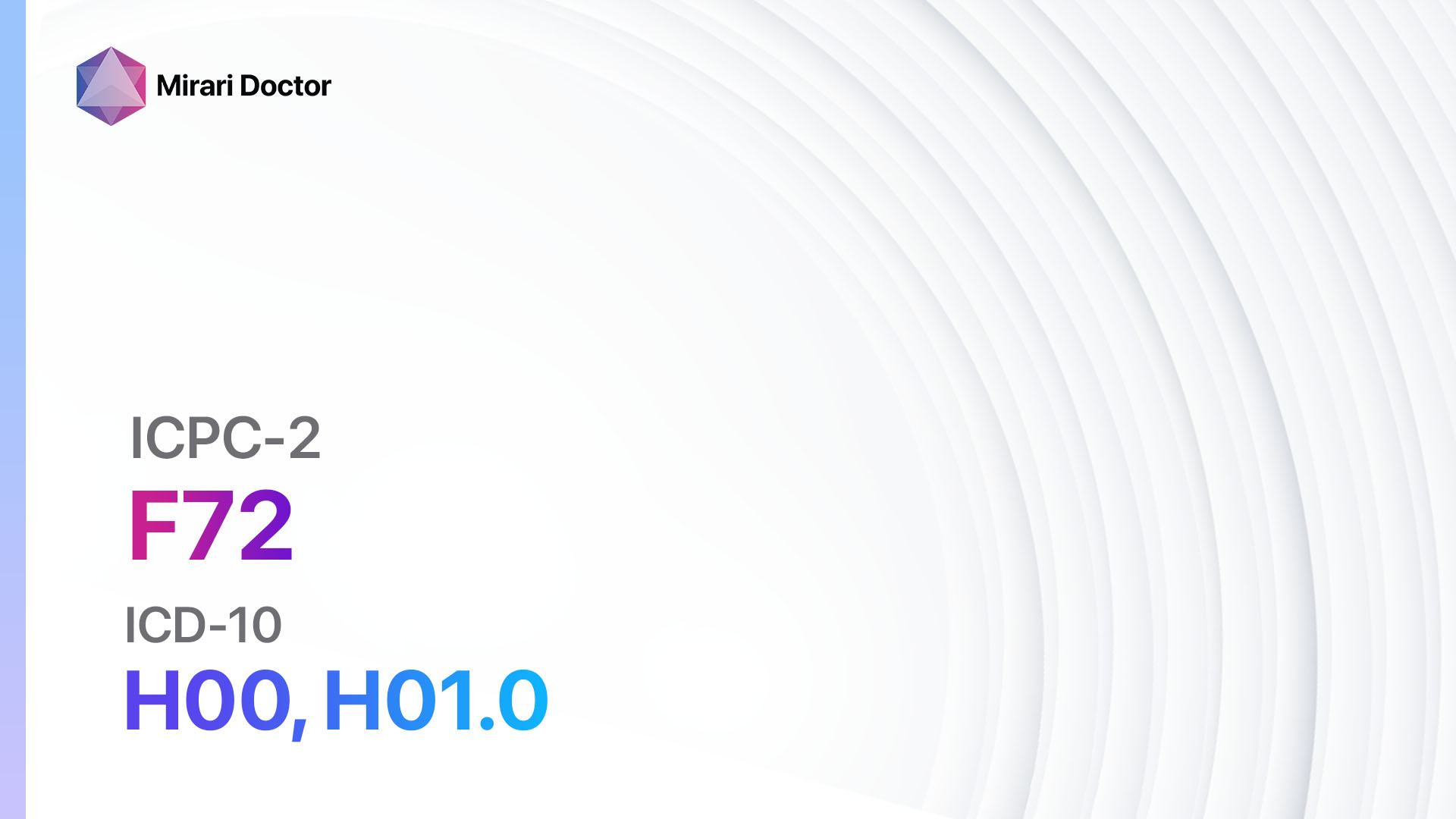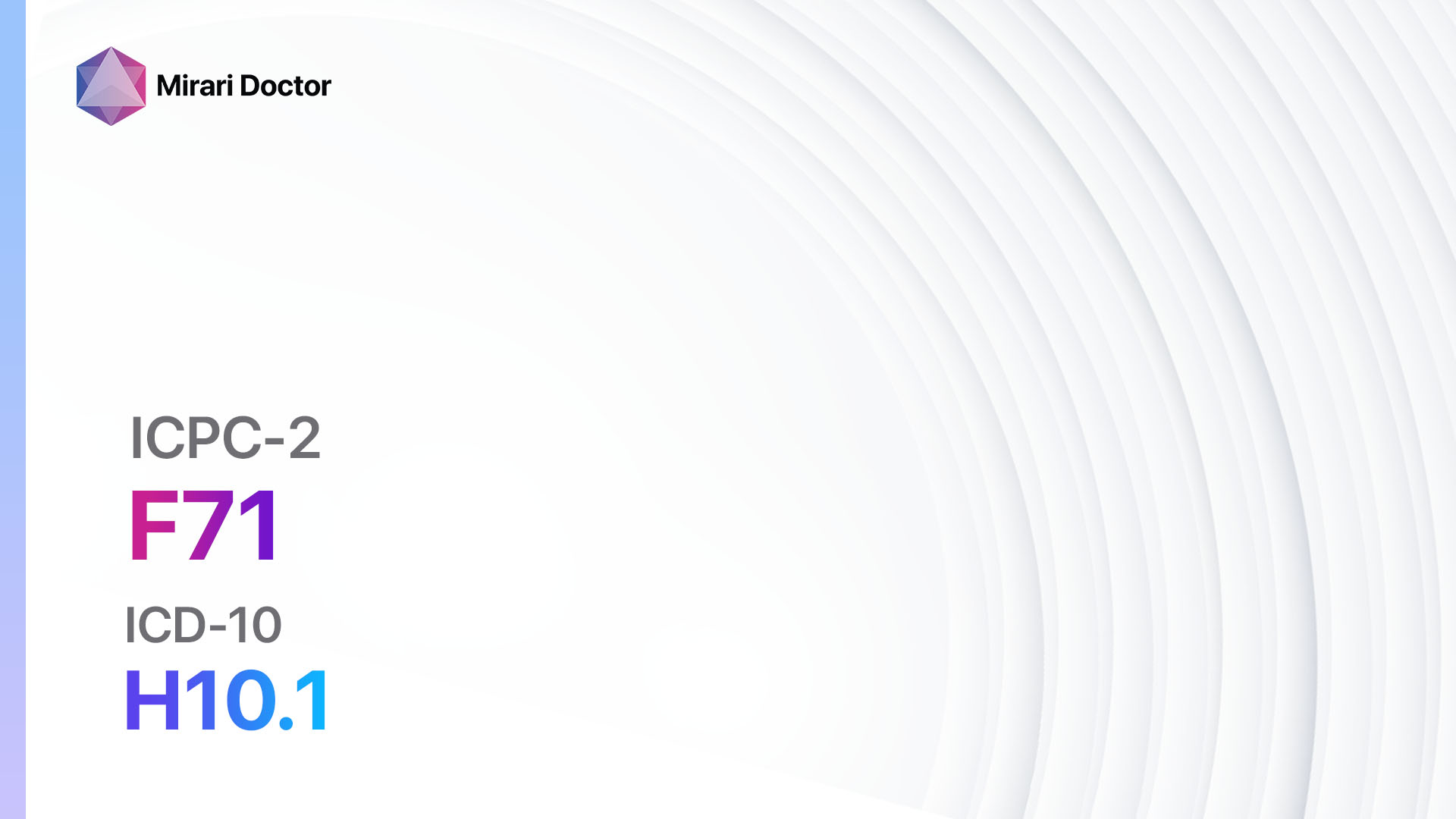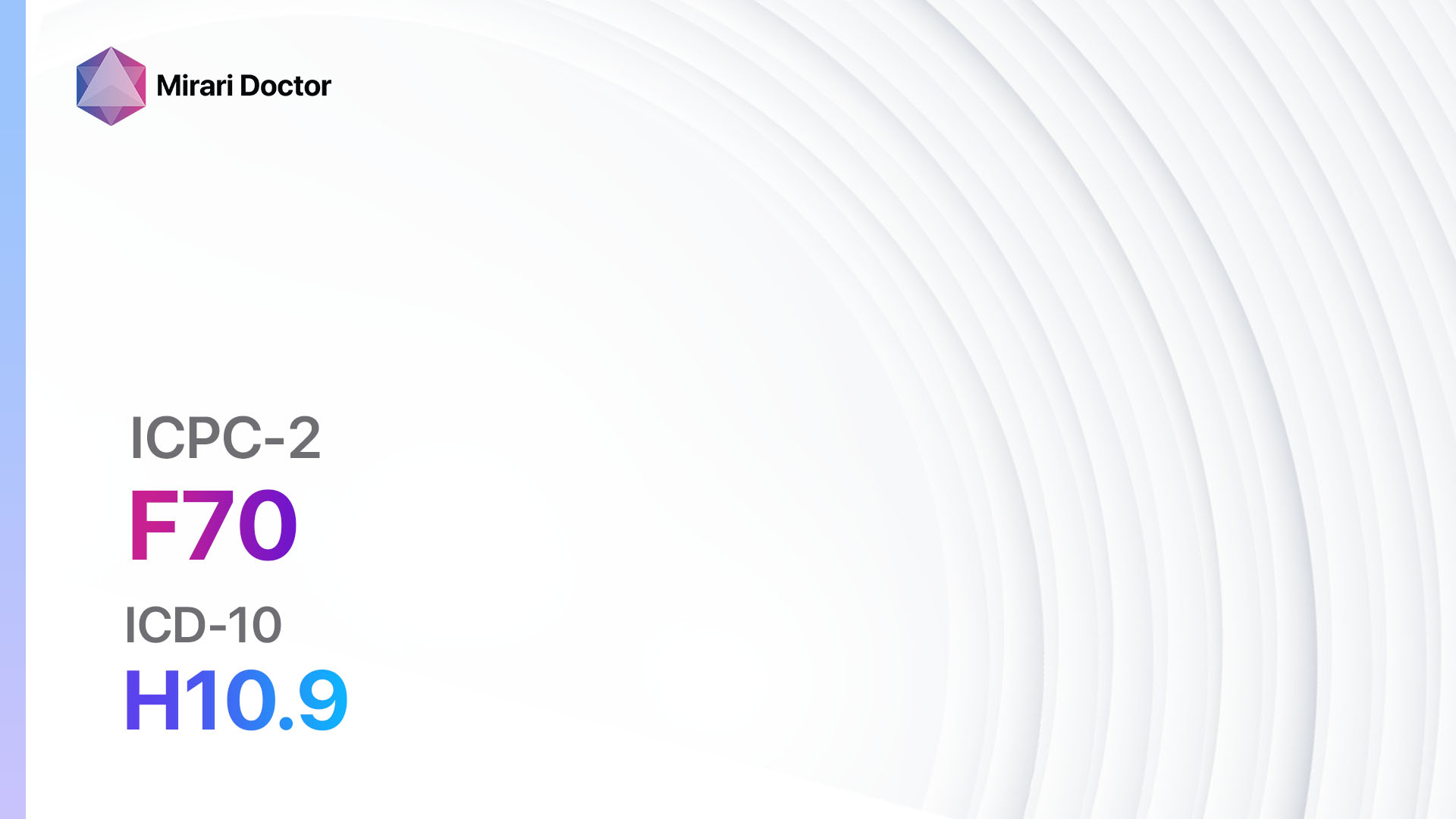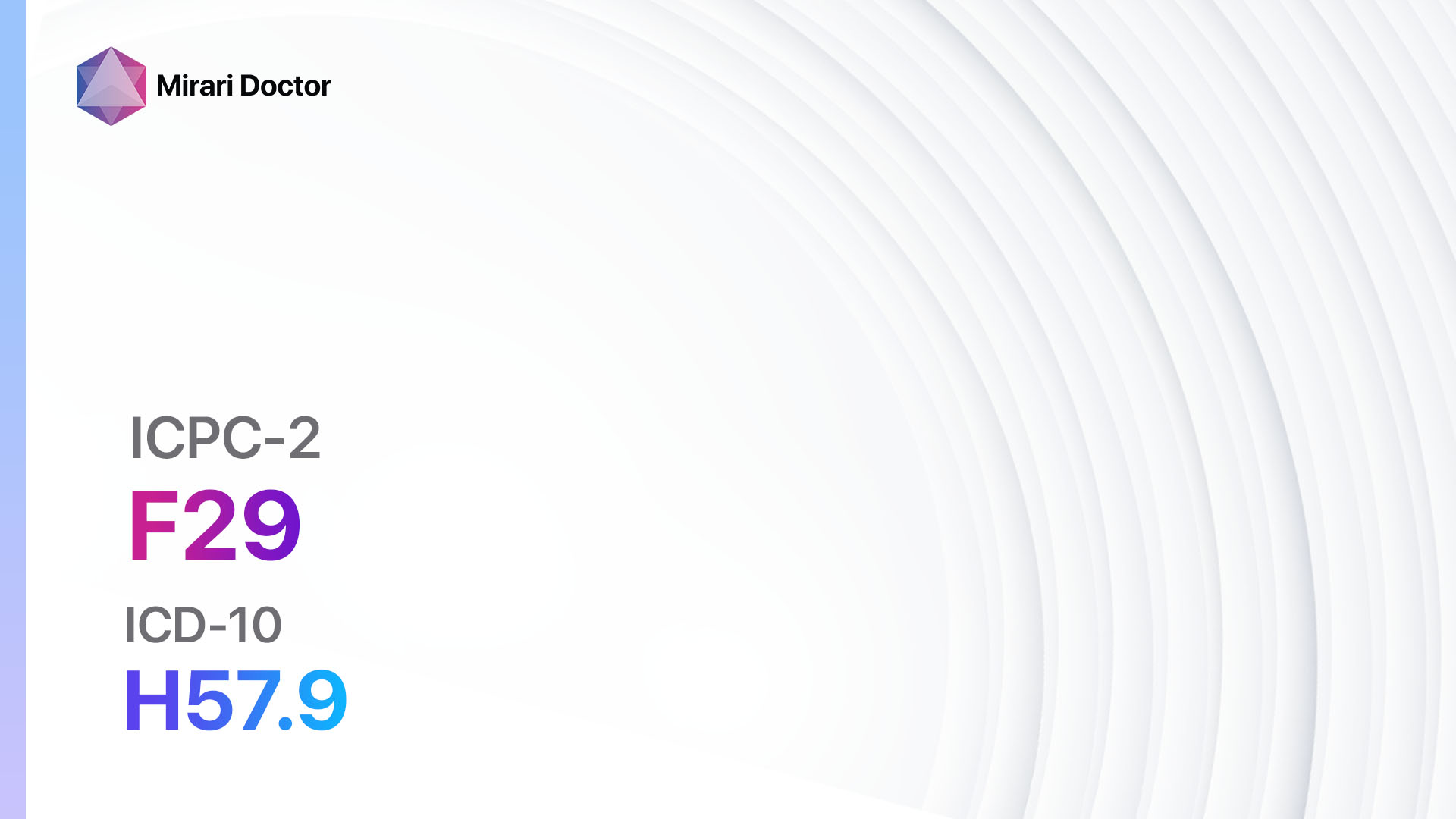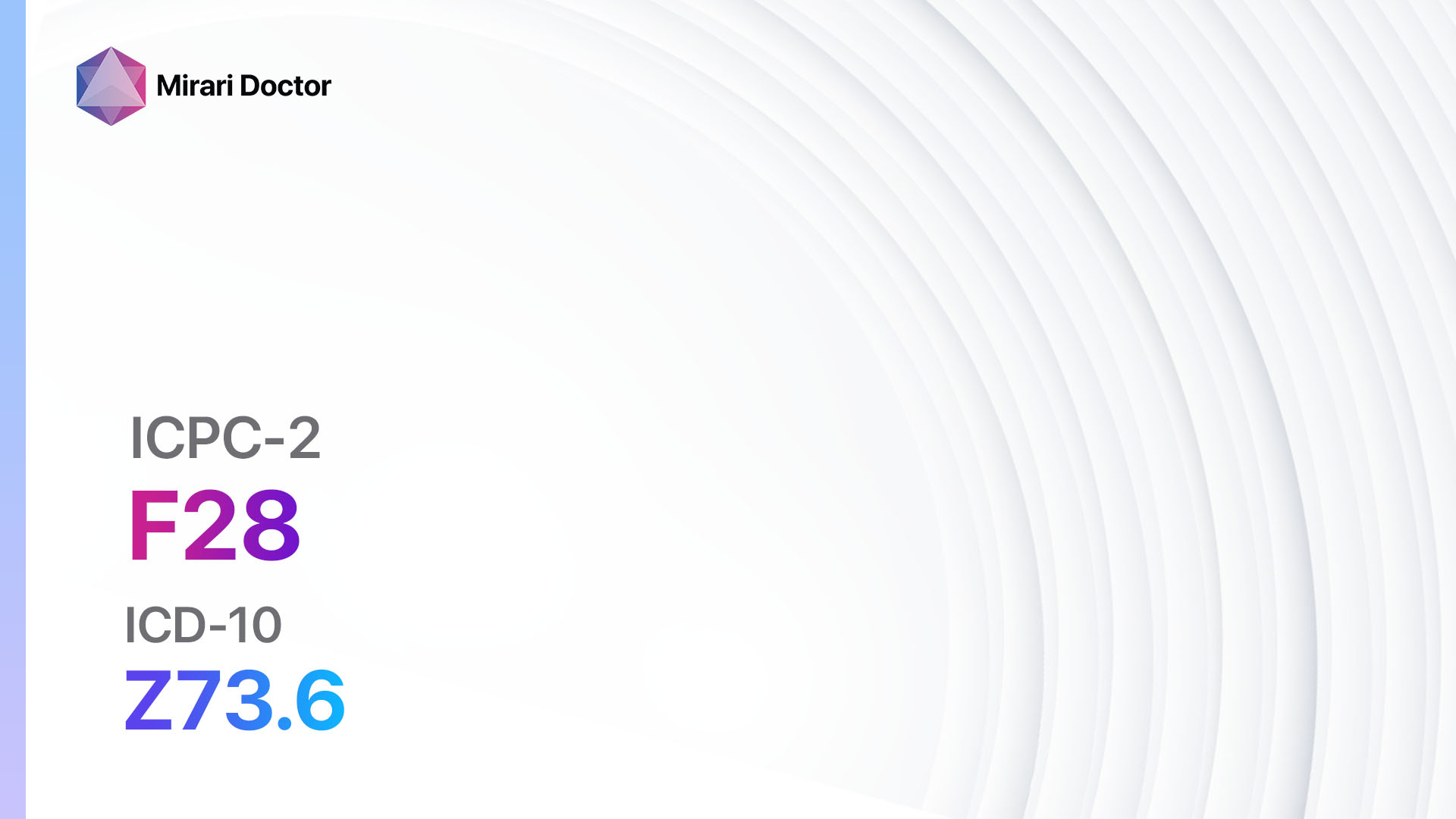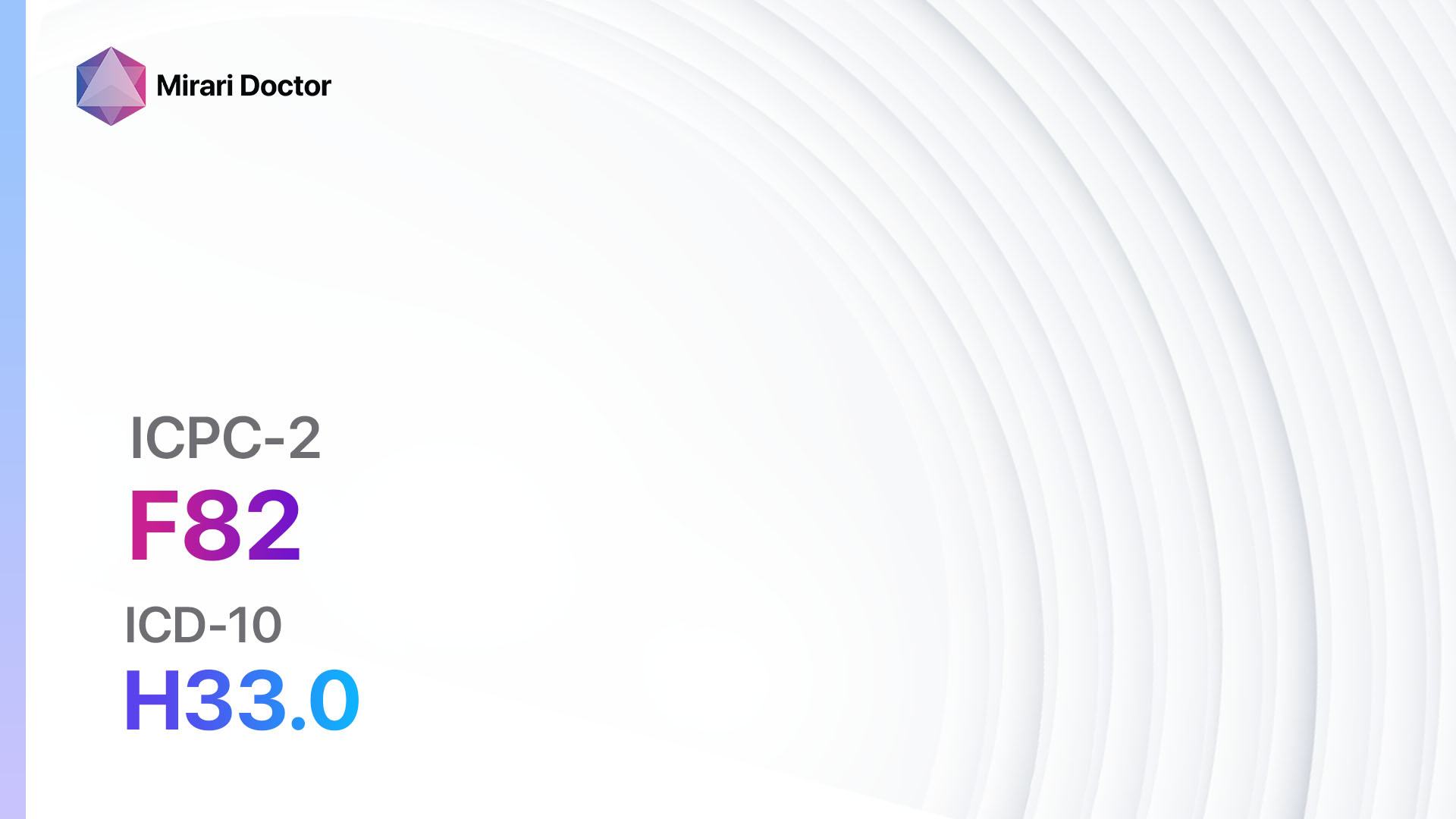
Introduction
Detached retina, also known as retinal detachment, is a serious eye condition that occurs when the retina, the light-sensitive tissue at the back of the eye, becomes separated from its underlying supportive tissue. This separation can lead to vision loss and, if left untreated, permanent blindness. The aim of this guide is to provide healthcare professionals with a comprehensive overview of the symptoms, causes, diagnostic steps, possible interventions, and patient education related to detached retina.
Codes
Symptoms
- Floaters: Dark spots or specks that float across the field of vision.[2]
- Flashes of light: Seeing flashes of light in the peripheral vision.[2]
- Blurred vision: Experiencing blurred or distorted vision.[2]
- Shadow or curtain: Seeing a shadow or curtain-like effect that obscures part of the visual field.[2]
- Loss of peripheral vision: Noticing a decrease in peripheral vision.[2]
Causes
- Age: Retinal detachment is more common in individuals over the age of 40.[3]
- Nearsightedness: People with severe nearsightedness are at a higher risk.[4]
- Eye trauma: Injury to the eye can cause the retina to detach.[5]
- Family history: Having a family history of retinal detachment increases the risk.[6]
- Previous eye surgery: Individuals who have had cataract surgery or other eye procedures are more prone to retinal detachment.[7]
Diagnostic Steps
Medical History
- Gather information about the patient’s risk factors, such as age, family history, and previous eye surgeries.[8]
- Inquire about symptoms, including floaters, flashes of light, blurred vision, and changes in peripheral vision.[8]
- Ask about any recent eye trauma or injuries.[8]
Physical Examination
- Perform a comprehensive eye examination, including visual acuity testing, intraocular pressure measurement, and examination of the retina using an ophthalmoscope.[8]
- Look for signs of retinal detachment, such as the presence of floaters, retinal tears, or a detached retina.[8]
Laboratory Tests
- No specific laboratory tests are required for the diagnosis of detached retina.[8]
Diagnostic Imaging
- Optical coherence tomography (OCT): This imaging technique provides detailed cross-sectional images of the retina, allowing for the detection of retinal detachment and other abnormalities.[9]
- Ultrasound imaging: In cases where the retina cannot be adequately visualized, ultrasound imaging can be used to assess the status of the retina and confirm the diagnosis of retinal detachment.[9]
Other Tests
- Fluorescein angiography: This test involves injecting a dye into the bloodstream and taking photographs of the retina to identify any abnormalities in blood flow.[9]
- Visual field testing: This test measures the patient’s peripheral vision and can help detect any loss of vision associated with retinal detachment.[9]
Follow-up and Patient Education
- Schedule regular follow-up appointments to monitor the progress of the condition and assess the effectiveness of treatment.[10]
- Educate the patient about the importance of seeking immediate medical attention if they experience any worsening of symptoms or new symptoms.[10]
Possible Interventions
Traditional Interventions
Medications:
Top 5 drugs for Detached Retina:
- Corticosteroids (e.g., Prednisolone):
- Cost: $10-$50 for a one-month supply.
- Contraindications: Active infections, glaucoma, cataracts.
- Side effects: Increased intraocular pressure, cataract formation.
- Severe side effects: Increased risk of infections, delayed wound healing.
- Drug interactions: None significant.
- Warning: Prolonged use may lead to glaucoma or cataracts.
- Mydriatics (e.g., Tropicamide):
- Cost: $5-$20 for a one-month supply.
- Contraindications: Glaucoma, hypersensitivity to the drug.
- Side effects: Blurred vision, increased intraocular pressure.
- Severe side effects: None reported.
- Drug interactions: None significant.
- Warning: May cause temporary sensitivity to light.
- Antibiotics (e.g., Ofloxacin):
- Cost: $10-$30 for a one-month supply.
- Contraindications: Hypersensitivity to the drug.
- Side effects: Eye irritation, stinging or burning sensation.
- Severe side effects: None reported.
- Drug interactions: None significant.
- Warning: Should not be used for viral or fungal infections.
- Nonsteroidal anti-inflammatory drugs (NSAIDs) (e.g., Ketorolac):
- Cost: $10-$30 for a one-month supply.
- Contraindications: Active peptic ulcer disease, bleeding disorders.
- Side effects: Eye irritation, stinging or burning sensation.
- Severe side effects: Corneal thinning, delayed wound healing.
- Drug interactions: None significant.
- Warning: Prolonged use may increase the risk of corneal complications.
- Carbonic anhydrase inhibitors (e.g., Dorzolamide):
- Cost: $20-$50 for a one-month supply.
- Contraindications: Hypersensitivity to the drug, severe renal impairment.
- Side effects: Eye irritation, bitter taste.
- Severe side effects: None reported.
- Drug interactions: None significant.
- Warning: May cause temporary blurred vision.
Alternative Drugs:
- Vitamin C: Antioxidant properties may help promote retinal health. Cost: $5-$20 for a one-month supply.
- Omega-3 fatty acids: May have anti-inflammatory effects and support retinal function. Cost: $10-$30 for a one-month supply.
- Lutein and zeaxanthin: Carotenoids that may help protect the retina from oxidative damage. Cost: $10-$30 for a one-month supply.
- Ginkgo biloba: May improve blood flow to the retina. Cost: $10-$30 for a one-month supply.
- Bilberry extract: Contains antioxidants that may support retinal health. Cost: $10-$30 for a one-month supply.
Surgical Procedures:
- Pneumatic retinopexy: A gas bubble is injected into the eye to push the detached retina back into place. Cost: $5,000-$10,000.
- Scleral buckle: A silicone band is placed around the eye to provide support to the detached retina. Cost: $10,000-$20,000.
- Vitrectomy: The vitreous gel is removed from the eye and replaced with a gas or silicone oil to reattach the retina. Cost: $15,000-$30,000.
Alternative Interventions
- Acupuncture: May help improve blood flow and reduce pain. Cost: $60-$120 per session.
- Chelation therapy: Controversial treatment involving the administration of chelating agents to remove heavy metals from the body. Cost: $75-$150 per session.
- Hyperbaric oxygen therapy: Involves breathing pure oxygen in a pressurized chamber to increase oxygen delivery to tissues. Cost: $200-$300 per session.
- Herbal supplements: Some herbs, such as bilberry and ginkgo biloba, may have potential benefits for retinal health. Cost: Varies depending on the specific supplement.
- Homeopathic remedies: Certain homeopathic remedies, such as Arnica montana and Ruta graveolens, may be used to support retinal health. Cost: Varies depending on the specific remedy.
Lifestyle Interventions
- Healthy diet: Encourage the patient to consume a diet rich in fruits, vegetables, and omega-3 fatty acids to support retinal health. Cost: Varies depending on food choices.
- Regular exercise: Promote regular physical activity to improve blood flow and overall health. Cost: Varies depending on the chosen exercise.
- Smoking cessation: Advise the patient to quit smoking, as smoking can increase the risk of retinal detachment. Cost: Varies depending on the chosen smoking cessation method.
- Eye protection: Educate the patient about the importance of wearing protective eyewear during activities that may pose a risk of eye injury. Cost: Varies depending on the chosen eyewear.
- Stress management: Encourage stress-reducing techniques, such as meditation or yoga, to promote overall well-being. Cost: Varies depending on the chosen method.
It is important to note that the cost ranges provided are approximate and may vary depending on the location and availability of the interventions.
Mirari Cold Plasma Alternative Intervention
Understanding Mirari Cold Plasma
- Safe and Non-Invasive Treatment: Mirari Cold Plasma is a safe and non-invasive treatment option for various skin conditions. It does not require incisions, minimizing the risk of scarring, bleeding, or tissue damage.
- Efficient Extraction of Foreign Bodies: Mirari Cold Plasma facilitates the removal of foreign bodies from the skin by degrading and dissociating organic matter, allowing easier access and extraction.
- Pain Reduction and Comfort: Mirari Cold Plasma has a local analgesic effect, providing pain relief during the treatment, making it more comfortable for the patient.
- Reduced Risk of Infection: Mirari Cold Plasma has antimicrobial properties, effectively killing bacteria and reducing the risk of infection.
- Accelerated Healing and Minimal Scarring: Mirari Cold Plasma stimulates wound healing and tissue regeneration, reducing healing time and minimizing the formation of scars.
Mirari Cold Plasma Prescription
Video instructions for using Mirari Cold Plasma Device – F82 Detached retina (ICD-10:H33.0)
| Mild | Moderate | Severe |
| Mode setting: 1 (Infection) Location: 7 (Neuro system & ENT) Morning: 15 minutes, Evening: 15 minutes |
Mode setting: 1 (Infection) Location: 7 (Neuro system & ENT) Morning: 30 minutes, Lunch: 30 minutes, Evening: 30 minutes |
Mode setting: 1 (Infection) Location: 7 (Neuro system & ENT) Morning: 30 minutes, Lunch: 30 minutes, Evening: 30 minutes |
| Mode setting: 2 (Wound Healing) Location: 7 (Neuro system & ENT) Morning: 15 minutes, Evening: 15 minutes |
Mode setting: 2 (Wound Healing) Location: 7 (Neuro system & ENT) Morning: 30 minutes, Lunch: 30 minutes, Evening: 30 minutes |
Mode setting: 2 (Wound Healing) Location: 7 (Neuro system & ENT) Morning: 30 minutes, Lunch: 30 minutes, Evening: 30 minutes |
| Mode setting: 3 (Antiviral Therapy) Location: 7 (Neuro system & ENT) Morning: 15 minutes, Evening: 15 minutes |
Mode setting: 3 (Antiviral Therapy) Location: 7 (Neuro system & ENT) Morning: 30 minutes, Lunch: 30 minutes, Evening: 30 minutes |
Mode setting: 3 (Antiviral Therapy) Location: 7 (Neuro system & ENT) Morning: 30 minutes, Lunch: 30 minutes, Evening: 30 minutes |
| Total Morning: 45 minutes approx. $7.50 USD, Evening: 45 minutes approx. $7.50 USD |
Total Morning: 90 minutes approx. $15 USD, Lunch: 90 minutes approx. $15 USD, Evening: 90 minutes approx. $15 USD, |
Total Morning: 90 minutes approx. $15 USD, Lunch: 90 minutes approx. $15 USD, Evening: 90 minutes approx. $15 USD, |
| Usual treatment for 7-60 days approx. $105 USD – $900 USD | Usual treatment for 6-8 weeks approx. $1,890 USD – $2,520 USD |
Usual treatment for 3-6 months approx. $4,050 USD – $8,100 USD
|
 |
|
Use the Mirari Cold Plasma device to treat Detached retina effectively.
WARNING: MIRARI COLD PLASMA IS DESIGNED FOR THE HUMAN BODY WITHOUT ANY ARTIFICIAL OR THIRD PARTY PRODUCTS. USE OF OTHER PRODUCTS IN COMBINATION WITH MIRARI COLD PLASMA MAY CAUSE UNPREDICTABLE EFFECTS, HARM OR INJURY. PLEASE CONSULT A MEDICAL PROFESSIONAL BEFORE COMBINING ANY OTHER PRODUCTS WITH USE OF MIRARI.
Step 1: Cleanse the Skin
- Start by cleaning the affected area of the skin with a gentle cleanser or mild soap and water. Gently pat the area dry with a clean towel.
Step 2: Prepare the Mirari Cold Plasma device
- Ensure that the Mirari Cold Plasma device is fully charged or has fresh batteries as per the manufacturer’s instructions. Make sure the device is clean and in good working condition.
- Switch on the Mirari device using the power button or by following the specific instructions provided with the device.
- Some Mirari devices may have adjustable settings for intensity or treatment duration. Follow the manufacturer’s instructions to select the appropriate settings based on your needs and the recommended guidelines.
Step 3: Apply the Device
- Place the Mirari device in direct contact with the affected area of the skin. Gently glide or hold the device over the skin surface, ensuring even coverage of the area experiencing.
- Slowly move the Mirari device in a circular motion or follow a specific pattern as indicated in the user manual. This helps ensure thorough treatment coverage.
Step 4: Monitor and Assess:
- Keep track of your progress and evaluate the effectiveness of the Mirari device in managing your Detached retina. If you have any concerns or notice any adverse reactions, consult with your health care professional.
Note
This guide is for informational purposes only and should not replace the advice of a medical professional. Always consult with your healthcare provider or a qualified medical professional for personal advice, diagnosis, or treatment. Do not solely rely on the information presented here for decisions about your health. Use of this information is at your own risk. The authors of this guide, nor any associated entities or platforms, are not responsible for any potential adverse effects or outcomes based on the content.
Mirari Cold Plasma System Disclaimer
- Purpose: The Mirari Cold Plasma System is a Class 2 medical device designed for use by trained healthcare professionals. It is registered for use in Thailand and Vietnam. It is not intended for use outside of these locations.
- Informational Use: The content and information provided with the device are for educational and informational purposes only. They are not a substitute for professional medical advice or care.
- Variable Outcomes: While the device is approved for specific uses, individual outcomes can differ. We do not assert or guarantee specific medical outcomes.
- Consultation: Prior to utilizing the device or making decisions based on its content, it is essential to consult with a Certified Mirari Tele-Therapist and your medical healthcare provider regarding specific protocols.
- Liability: By using this device, users are acknowledging and accepting all potential risks. Neither the manufacturer nor the distributor will be held accountable for any adverse reactions, injuries, or damages stemming from its use.
- Geographical Availability: This device has received approval for designated purposes by the Thai and Vietnam FDA. As of now, outside of Thailand and Vietnam, the Mirari Cold Plasma System is not available for purchase or use.
References
- World Health Organization. (2022). International Statistical Classification of Diseases and Related Health Problems (ICD-10). Retrieved from https://icd.who.int/browse10/2022/en#/H33National Eye Institute. (n.d.). Retinal Detachment. Retrieved from https://www.nei.nih.gov/learn-about-eye-health/eye-conditions-and-diseases/retinal-detachment
- Kellogg Eye Center, University of Michigan Health System. (n.d.). Retinal Detachment. Retrieved from https://www.med.umich.edu/1libr/Ophthalmology/Retina/RetinalDetachment.pdf
- American Academy of Ophthalmology. (n.d.). Retinal Detachment. Retrieved from https://eyewiki.aao.org/Retinal_Detachment
- WebMD. (2022). Retinal Detachment Symptoms. Retrieved from https://www.webmd.com/eye-health/eye-health-retinal-detachment
- Mayo Clinic. (2022). Retinal detachment. Retrieved from https://www.mayoclinic.org/diseases-conditions/retinal-detachment/symptoms-causes/syc-20351344
- Cleveland Clinic. (n.d.). Retinal Detachment: Symptoms & Causes. Retrieved from https://my.clevelandclinic.org/health/diseases/10705-retinal-detachment
- American Academy of Family Physicians. (2004). Evaluation and Management of Suspected Retinal Detachment. Retrieved from https://www.aafp.org/pubs/afp/issues/2004/0401/p1691.html
- MSD Manuals. (n.d.). Retinal Detachment. Retrieved from https://www.msdmanuals.com/professional/eye-disorders/retinal-disorders/retinal-detachment
- Farjo, Rafal ; Peterson, Ward M ; Naash, Muna I (2008). Expression Profiling after Retinal Detachment and Reattachment: A Possible Role for Aquaporin-0. DOI: 10.1167/iovs.07-1013
Related articles
Made in USA


